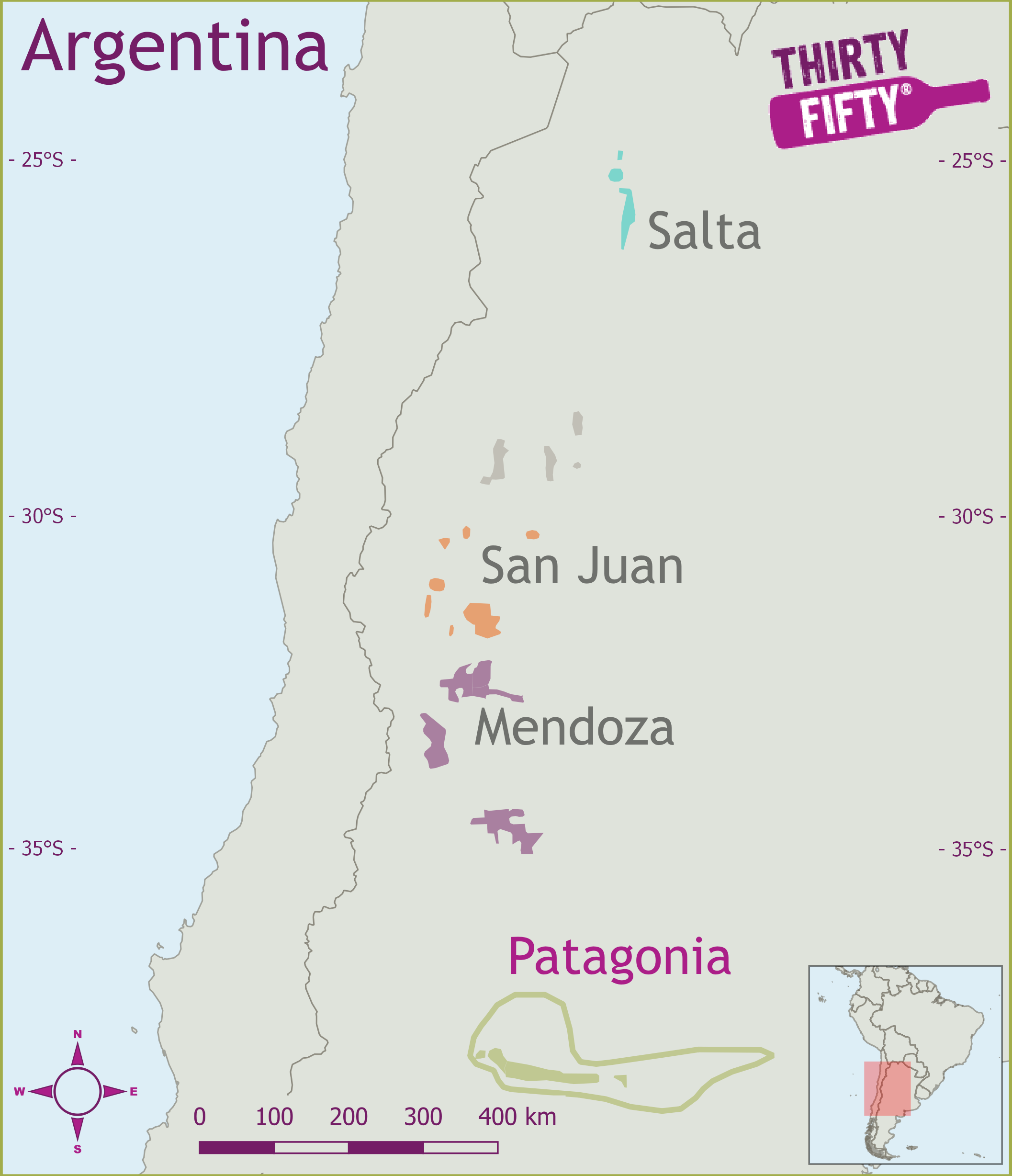Patagonia's Grapes: Malbec
Malbec
The black Malbec grape is used to make red wine in Bordeaux, the Loire and south west France, where it is grown under a number of different names. It is known as Pressac in Bordeaux, Auxerrois in Cahors and C�t in the Loire. In Argentina, it's adopted land, Malbec has been grown in quantity and is now successfully exported around the world. The grape can create both fruit-driven, plummy-like characteristics, but in Cahors it tends to gamey aromas and has quite considerable ageing potential. A mid-season ripener in Bordeaux, Malbec can bring very deep colour and ample tannins to create a great base for blended wines. It is also planted in New Zealand, Chile, California and Australia where it is used in blends rather than as a single varietal wine.
Patagonia
Key Grape Variety: Malbec

Patagonia is the southernmost wine region in Argentina and is made up of two neighbouring provinces - Rio Negro and Neuquen. It is also the lowest region in the country, at around 400 metres above sea level, much of it characterised by expansive prairies and sheep farms, but it is doing its best to put itself on the wine map. In fact, cool climate varieties, such as Riesling, Semillon, Pinot Noir and Gewurztraminer, are doing well here, while Cabernet Sauvignon, Merlot, Syrah and Chardonnay are also grown, along with Argentinian varieties, such as Torrontes and Malbec.
Certainly, the 32,700 hectares or so of vineyards in this dry, continental and very windy climate with its long summer days provide the ideal conditions for growing grapes, as do the thick and stony soils. And Rio Negro at least has a history of winemaking, beginning at the time of the railroad, which was built and owned by the British. They planted apple and pear orchards for fruit that they could ship back home when these fruits were out of season there and they planted vineyards alongside them, perhaps because they were missing the wines they were used to drinking from Europe. Their wine was mainly drunk locally, but things have changed and the province is now focussing on quality production for an international market.
Neuquen, on the other hand, is the newest wine region in Argentina and, for the most part has only been in production in the 21st century. It’s been carved out of the desert – yes, the desert! A group of entrepreneurs thought that the warm, dry weather in San Patricio del Chanar, was similar to that of the Rio Negro and would be perfect for grape growing in spite of there being no water! But they got round that by building an extensive irrigation system connected to the Neuquen River. The wineries all have the latest technology and, a few vintages in, are showing promise. Pinot Noir, Argentinian-grown reds along with Sauvignon Blanc, Semillon and Chardonnay and being grown. Watch this space!


